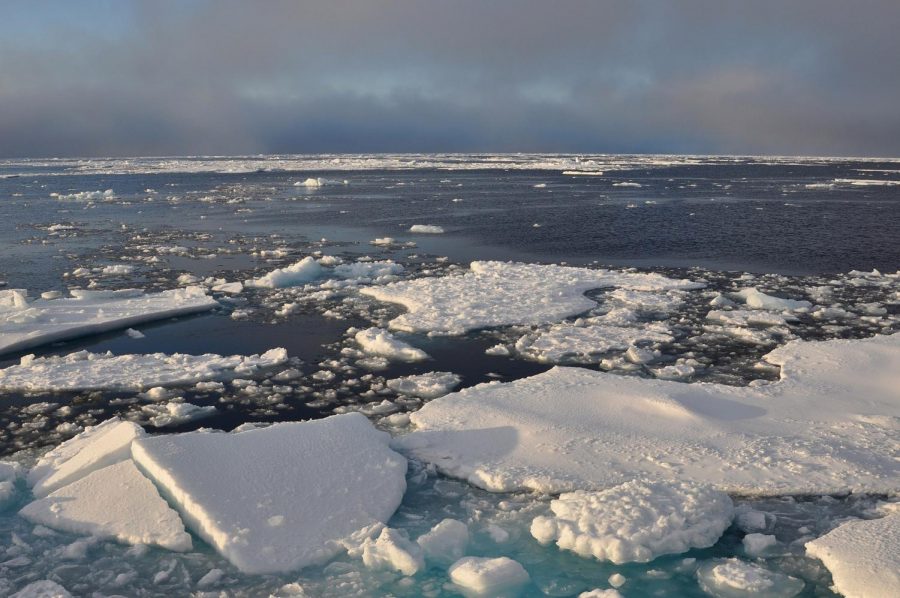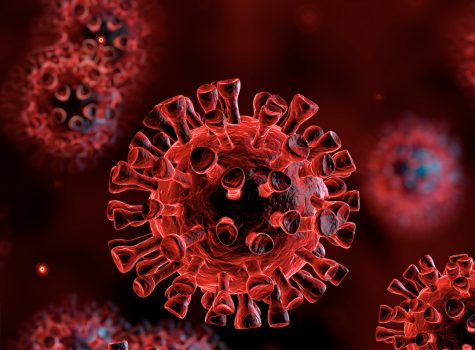Wildlife affected by changes in the Arctic
Patrick Kelley via Wikimedia Commons
Melting sea ice in the Arctic is having an effect on the environment.
The extinction of many species including the polar bear is soon reality due to melting sea ice and rising temperatures in the arctic. Polar bears are exhausted just trying to survive on account of depletion of ice.
Global warming and climate change have detrimental effects on wildlife in the arctic and irreversible consequences to the environment.
The arctic region is north of the equator made up by parts of the Arctic Ocean, Alaska, Russia, Canada, Finland, Greenland, Iceland, Norway, and Sweden.
Different from Antarctica, the Arctic is sea surrounded by land rather than land surrounded by sea. This is home to many different species in and out of the water. The Arctic also aids in regulating the world’s climate and is the most sensitive region to be affected by global warming, according to the National Snow and Ice Data Center.
Sea ice is extremely important to the habitants and global temperatures. Ice is melting because of greenhouse gases and chemicals in the atmosphere caused by human industrialization, global warming, according to National Geographic.
The World Wildlife organization, fighting for habitat preservation and decreasing human impact on the environment, says 95 percent of the oldest and thickest sea ice is gone. Melting ice will greatly affect climate change around the world.
According to GreenPeace Organization, without sea ice sun rays are not being reflected back into space. The oceanic temperature will rise causing the rest of the world’s oceans to as well because the arctic ocean plays a significant role in the regulation of global temperature.
Global warming is destroying our arctic. Scientists believe the arctic could be completely ice free as early as 2040, according to the World Wildlife organization.
¨Climate change has made the arctic significantly less habitable for a majority of the endemic (native) species,” Mr. Robert Swason, science, said. “If we focus specifically on the arctic, rising average temperatures impact both terrestrial and oceanic life.”
The Arctic is not only home to more than five thousand species of animals but also home to over four million people including indeginous communities. Amongst other species, polar bears’ only home is the arctic, and they are in danger.
Ice in the sea is crucial for the survival of many animals who live in the arctic. They provide survival to polar bears, seals, foxes, walruses, and more. Polar bears spend a lot of time in the water, traveling or hunting, they use sea ice to rest or to eat. Seals are always on ice or in the ocean, being on ice gives polar bears an opportunity to hunt. Without ice, polar bears’ main prey would be in the water more often than not.
Recently it has been seen that polar bears have been going on longer adventures for food causing exhaustion and long periods without food, decreasing reproductivity, Dr. Peter K. Molnar, science researcher at the University of Toronto Scarborough, told the New York Times.
Polar bears and the Arctic’s native species are vulnerable to becoming endangered because of the rapid decrease in sea ice.
¨While rebound may occur, the new ecosystems will be less diverse and less resilient. I would hope that we, as stewards of the world, can work to mitigate further impacts on these already changed ecosystems,¨ said Swanson.
What can students do to help the environment?
¨Students can help by reducing their carbon footprint,” said Ms. Jamie Fisher, science. “Some actions would include walking or biking places rather than driving everywhere, recycling as much as possible, eating more locally sourced fruits and vegetables, and the obvious things like turning off electronics when not in use.”












